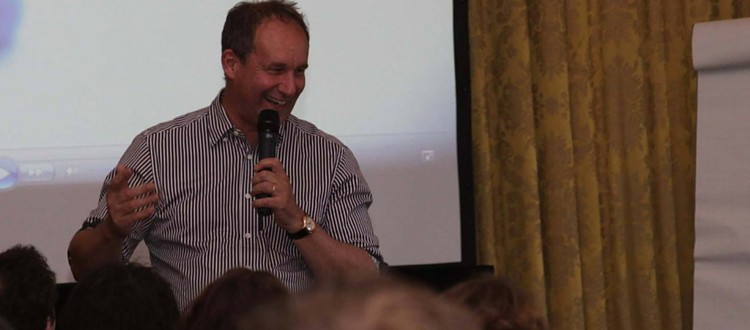How to deliver a 5-star speech
Do you often have to speak in public? Would you like to improve your presentation skills and get to feel more comfortable speaking in front of your audience? I recently read Barbara Rogoski’s book ‘Boring to Brilliant! A speaker’s guide’ and found her tips very useful so I thought I’d share some of them with you. Barbara Rogoski is a TEDx speaker coach so she definitely knows what a brilliant speech looks like.
Content
- Never start your speech with ‘My name is…’ or anything dull like that. Think of a memorable statement that will grab your audience’s attention right from the start. Barbara calls this the ‘WOW opening statement’. Always have this one ready – you have only a few seconds to make your audience believe it’s worth listening to your speech.
- After the ‘WOW opening statement’ you need to clearly state the take away message. What is the main message you want to get across? If you could choose one thing you would want people to talk about the following day, what would that be?
- The end is of great importance too. Come up with a ‘WOW closing statement’ to wrap up your speech in order to ensure that your ideas will stick to people’s minds. You want them to remember you and your ideas, you want your speech to have an impact so never finish it with a sentence like ‘That’s all I had to say’. End with a bang!
- Have a call to action. What do you want people to do after listening to your speech, what is your goal? Why are you speaking in front of them? Use your call to action before your closing statement.
- People don’t easily remember more than three points so when preparing your speech, structure it in three key points and split these points into three sub-points. Barbara calls this the ‘Sacredness of three’.
- Use your Power Point presentation only for images and keywords to support the outline of your speech. Never read from it as you will get your audience to focus on it rather than on your speech. People can only do one thing at a time.
Delivery
- Barbara advises that before you get on the stage you say to yourself: ‘I own the room’. This will boost your self-confidence and send the same message to your audience.
- Practise, practise, practise! This is a tip that comes up quite a few times throughout the book. A speaker with an impact is one who has prepared his/her speech up to the smallest detail, even the pauses and the gestures.
- Made a mistake? Doesn’t matter! Keep going, people might not even notice. If you say ‘sorry’ you’re just drawing attention to it so don’t!
- Lost your notes? Your USB/PPT doesn’t work? Always have a plan B. Think of alternatives beforehand and keep your calm. It’s important to look confident in front of your audience even in a difficult situation.
Voice
- Don’t fill the spaces between your sentences with uhms and aahs. It’s better to simply pause.
- Consider using vocal variety. This can make your speech more effective as it can help emphasise certain points.
- Do you have a point that needs special emphasis? You can draw attention to it by repeating it and having a little pause in-between for a better effect.
- Think of a few punch words and use them strategically during your speech to draw attention to certain ideas.
Body
- Depending on the set-up of the room, you might want to consider moving across the stage in order to keep people’s attention and diffuse energy throughout the speech.
- If you want to emphasise a point, make a call to action etc, go closer to your audience or lean forward. You can practise all this at home in front of the mirror.
- Try to make eye contact with everyone, make them feel they are all part of your speech and never look over your audience.
- This might seem quite obvious, but never cross your arms or your feet (in case you have to sit).
- Smile when you get on the stage, people will judge you right away, so you have 30 seconds to get them on your side.
Audience engagement
- Ever heard of the 70-20-10 rule? Apparently 70% of a successful speech is based on body language, 20% on delivery and only 10% on content! Crazy, right?! So practising in front of the mirror does make sense.
- Ask rhetorical questions to increase engagement. This will help keep people connected to your speech.
- ‘Take the temperature’ of your audience during your speech to ensure you don’t lose their attention for good.
- Acknowledge the people in front of you, show them what’s in it for them, why they should be listening to you.
- Consider telling a personal story. Barbara claims that if you let yourself be vulnerable in front of your audience, you have a much better chance to connect with them. At the same time, make sure to mention your credentials in a subtle way (not at the beginning though!) to reinforce your position as an expert.
I hope you find these tips helpful and highly recommend reading Barbara’s book to dive deeper into the topic. Share this post with your friends and if you have some extra tips, make sure to write them in the comments below.
Also join our Annual Conference on 360° Leadership, taking place on 29 August at Academiegebouw in Utrecht. The programme will feature a public speaking masterclass where you will get the chance to practise your skills and receive personalised advice.

